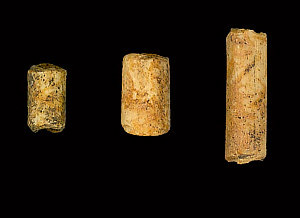Birds
Birds were sought for a variety of purposes by native peoples. It has been difficult, however, to determine just how much of the prehistoric diet was based on eating birds. Although there is clear evidence that larger birds, such as turkey and ducks, were hunted, remains of smaller birds are less frequently encountered. Their tiny bones are fragile, and tend to pass through archeologistsí screens unless special measures are taken to collect them. When recovered, the diminutive bones are typically in small pieces and are difficult to type to a particular species.
A variety of birds were identified from Late Prehistoric encampments at the Hinojosa Site (41JW8) in Jim Wells County, including wild turkey (Meleagris gallopavo) and roadrunner (Geococcyx californicus), as well as herons, birds of prey, and indeterminate members of the Anatidae family (ducks, geese, or swans). At both the Berger Bluff site in Goliad County and site 41LK201, bones of small, songbird-size birds were recovered but could not be identified to species.
In addition to their value as a source of meat, birds were valued for other purposes. Their feathers could be used in headdresses or other ornaments, and hollow leg bones of larger birds were used to make ornamental beads.
Bird eggs no doubt would have been sought as a protein source, as was evidenced at the Wilson-Leonard site (41WM235) on the Edwards Plateau, north of the south Texas region. Egg shells, like tiny bird bones, are extremely fragile; at Wilson-Leonard, special samples were taken during excavation with the intent of processing through water flotation, a process in which tiny bits of evidence can be recovered, then identified microscopically. At that site, native peoples clearly were eating a variety of bird eggs, as likely was the case in many other areas throughout history.
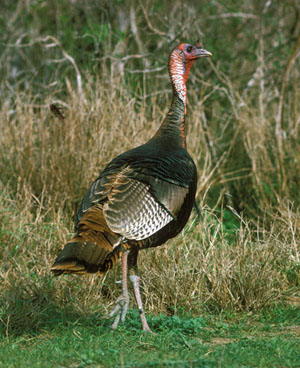
An Eastern Wild Turkey moves watchfully toward the brush. These large birds likely were prized both for food and feathers. Photo courtesy Texas Parks and Wildlife Department.
|
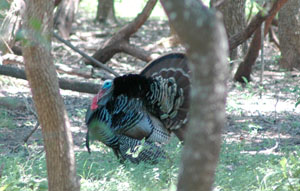
A male turkey, known as a “Tom turkey” or gobbler, fans its tailfeathers during a mating ritual in the south Texas. Photo by Jeff Taff. |
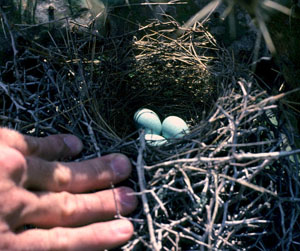
Bird eggs were an easy item for native peoples to gather. This nest was found in a large prickly pear cactus in south Texas. Photo by Bob Stiba. |
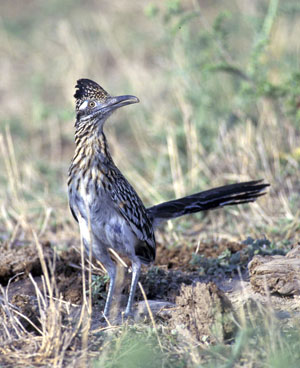
Fleet-footed roadrunners, today a south Texas standard, were on the menu for prehistoric peoples. Fast food, anyone? Photo courtesy U.S. Fish and Game. . |
